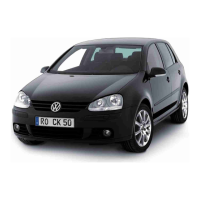Driver assistance systems
Warning and Brake Assist Levels
Please note at the beginning of this chapter on page 145.
Within the limitations of the system and depending
on equipment, Front Assist can detect the following
objects:
—
Vehicles travelling in front of them in the same
direction
—
Detained vehicles
In the event of an approach to a detected object
that would lead to a collision if the speed remains
the same and the driver does not intervene, the
Front As- trolley will automatically switch to the
front of the vehicle.
The system may intervene as an aid. The assistance
may be in the form of a pre-warning, a silent warning
or automatic braking.
Ideally, this can prevent a collision or, if it does
occur, help to reduce its sequences.
Front Assist operates in the following speed
ranges:
Stopped vehicle 30 to 85 km/h
(20 to 53 mph)
-
From 5 to 50
km/h
(3 to 30 mph)
From 5 to 85 km/h
(3 to 53 mph)
Vehicle travelling in
front of you in the
same direction of
travel
From 30 to 250
km/h
(from 20 to 155
mph)
From 30 to 250
km/h
(from 20 to 155
mph)
From 5 to 250
km/h
(3 to 155 mph)
From 5 to 250 km/h
(3 to 155 mph)
The data are only valid under ideal conditions, are
approximate and depend on the market and
equipment. If you are in doubt about the equipment
level of your vehicle, please contact your dealer.
Prior notice
The system detects a potential collision and
pre-stops the vehicle for possible emergency
braking.
An acoustic warning will sound and the red warning
signal will light up. Stop or re-route!
Severe
warning
If the driver does not react to the warning, the
system may trigger a short braking jerk to warn of
the impending danger of a collision. brake
or divert the trajectory!
Automatic
braking
If the driver also fails to react to the severe warning,
the system can brake the vehicle automatically by
gradually increasing the braking force. By reducing
speed, the consequences of an accident can also
be reduced.
Brake Assist
If the system warns that the driver is not braking
sufficiently in the event of a collision danger, it can
Severe warning Automatic braking Frequency assistance
nothing
•
If the function of Front Assist is impaired, e.g.
due to soiling or maladjustment of the radar
sensor, the system may emit warning
messages.
The Committee would point out that the
Commission is not in a position to intervene in
the frequencies inappropriately.
•
Front Assist does not react to people or
animals, nor to vehicles crossing the road.
The following applies to the same lane: -
crosswise or approaching in the opposite
direction on the same lane.
•
Always be prepared to control yourself
the vehicle itself.
•
If Front Assist issues a warning, brake the
vehicle immediately or avoid the obstacle,
depending on the traffic circumstances.
•
Always adapt the speed and the safe distance
to the vehicle in front according to the
visibility, weather, climate and other
conditions.
The following are the main reasons for this.
•
Front Assist alone cannot prevent accidents or
serious injuries.
•
In complex driving situations, Front Assist may
warn unnecessarily and inter- come on the
brakes inopportunely, e.g. in the
traffic islands.

